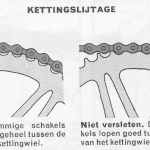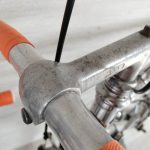A headset is a very important part of the bicycle, as it is the connection between the frame and the handlebar. It is therefore subject to a lot of forces and sometimes it happens that there is play on it.
Nowadays, all Ahead type headsets are either integrated into the head tube of the frame, but we are talking about vintage steel road bikes and therefore the classic headset that is external and therefore visible.
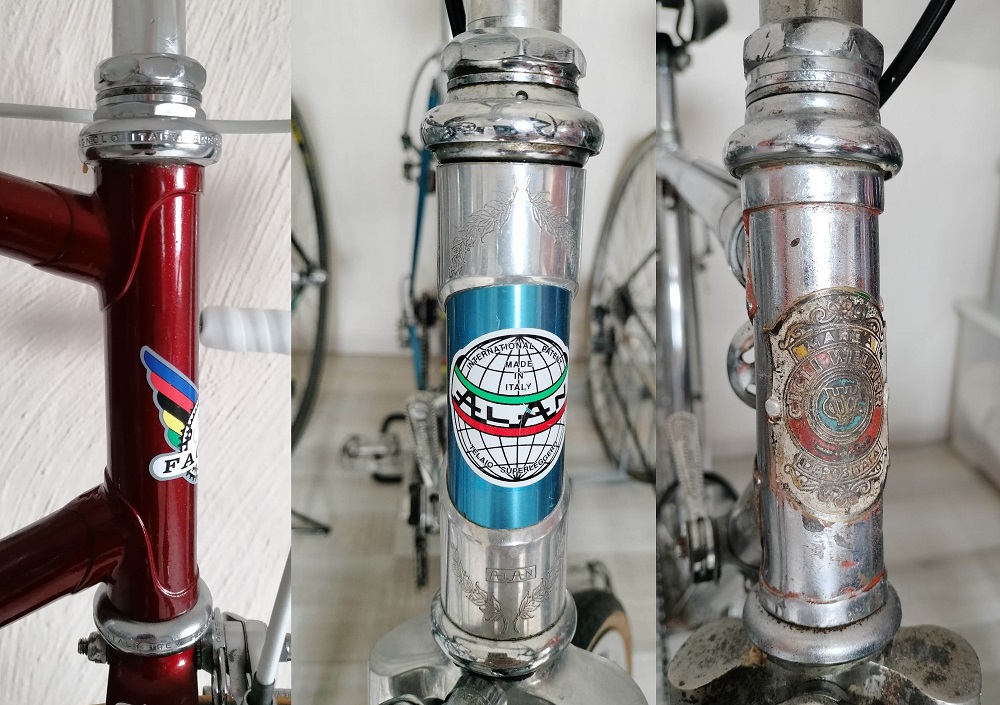
Function of the headset
The headset, together with the bearings of the front and rear wheel and the bottom bracket, is part of the main bearings of the bicycle. It should ensure that the stem turns smoothly and without friction. It should not be too tight, but also not loose, as damage may occur.
The headset must be able to withstand various forces such as compressive force due to the cyclist's weight, tensile force due to shocks on the road and lateral force when the rider pulls on the handlebars, such as when sprinting or climbing.
Structure of the headset
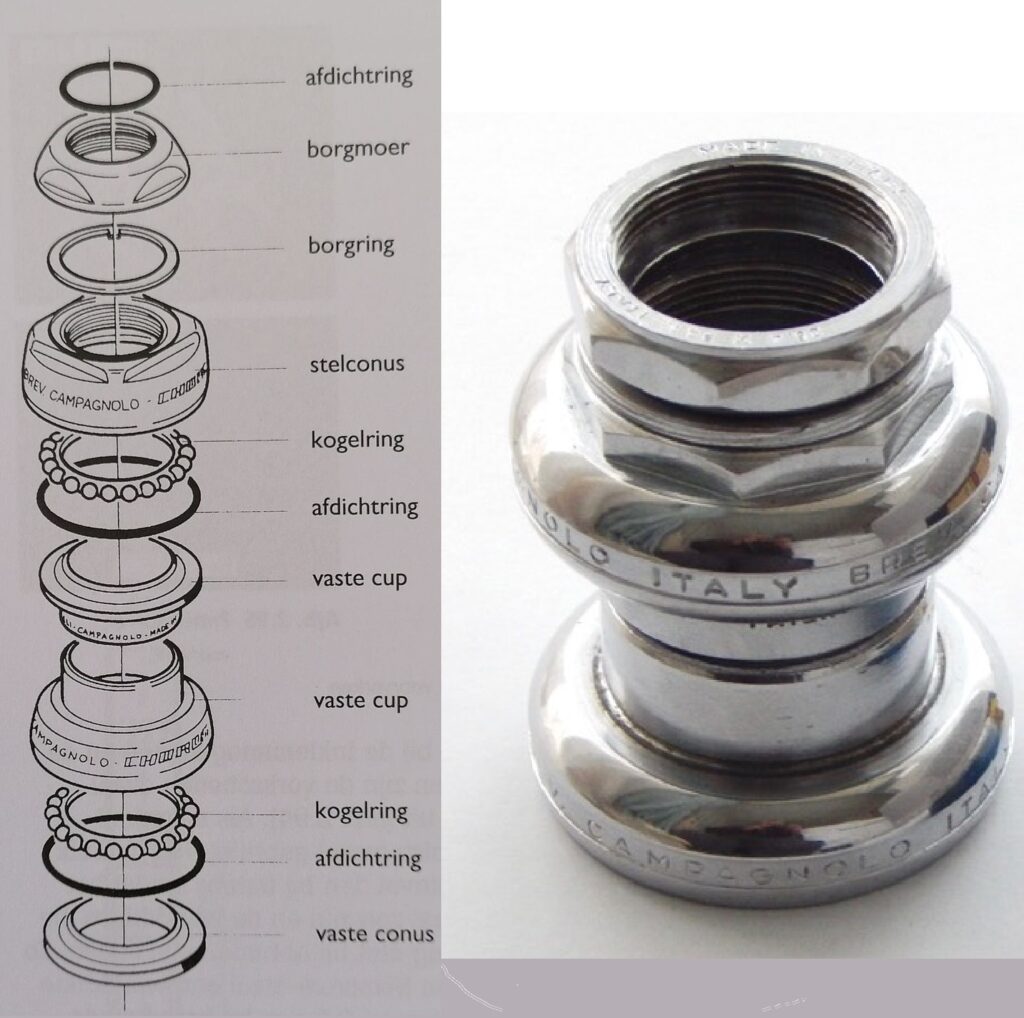
Simply, the headset can be split into 3 parts: the top part, the middle part and the bottom part.
- The upper part consists of the sealing ring, lock nut, locking ring, adjusting cone, ball ring and sealing ring.
- The middle part of the 2 fixed cups
- The lower part consists of the ball ring, the sealing ring and the fixed cone
The upper part
The top part is used to attach the stem to the front fork. The stem is pushed into the front fork through the top lock nut and secured with the handlebar expander. This diameter is in most cases 22.4mm.
You will not find the sealing rings on the older bicycles, but only from the 1980s.
The middle piece
The 2 fixed cups of the middle section have an outer diameter of 30mm to 30.2mm, which means that the head tube must also have an inner diameter of 30mm or 30.2mm. The difference between the possible sizes is therefore only 0.2mm.
For the headset to function optimally, the cups must fit perfectly in the head tube, which is why they are pressed in with a headset cup press when mounting and knocked out with a headset cup driver.
Especially with a new steel frame, it happens that there are drops of paint on the ends of the inside of the head tube, so you have to remove them first. This is done with a headset cup cutter. (more about how to disassemble and assemble a headset can be found in the Disassemble and install a classic headset)
On normal bikes and sporty racing bikes you will usually find a protrusion (housing) above and below the head tube in which the cups can be placed and therefore do not have to be pressed in.
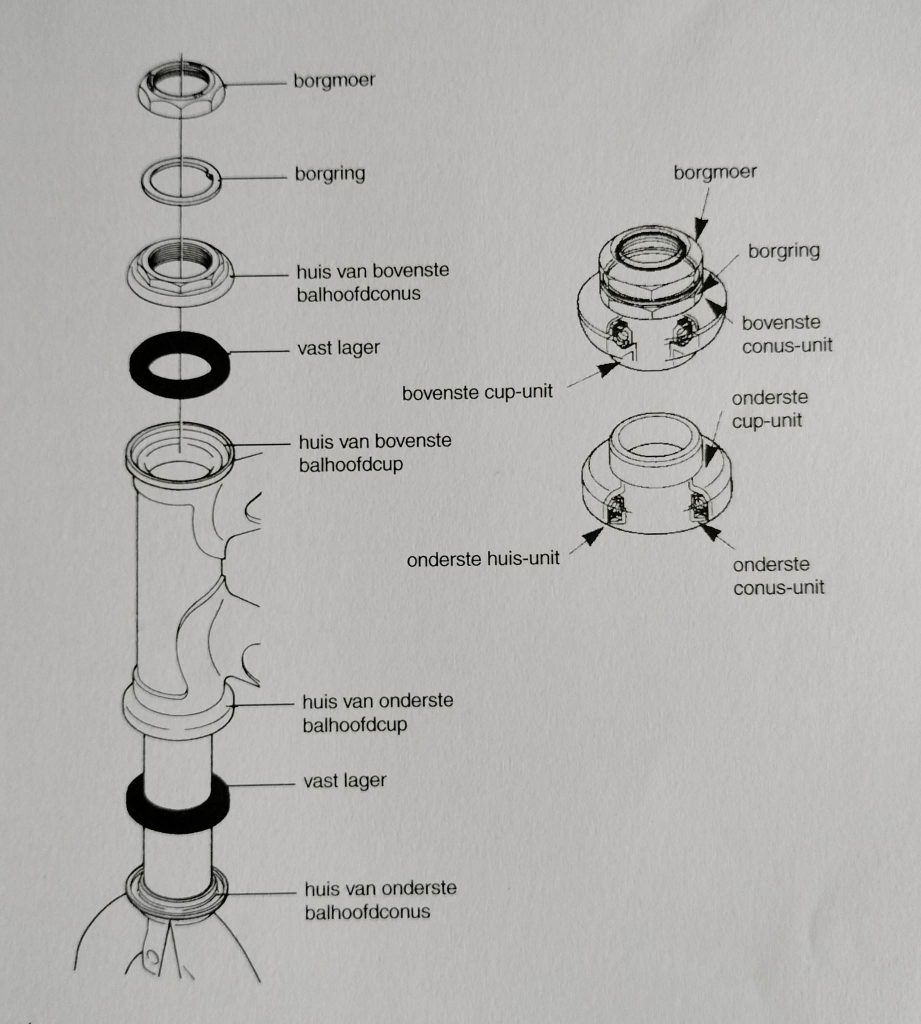
The lower part
The lower part is used to attach the front fork to the head tube. This is done by the fixed cone that must fit exactly on the front fork. There is also the right tool for this. The diameters of the front fork can also differ: 26.4mm or 27mm.
Headset with loose balls
The first headsets did not yet have bullet rings, but only loose bullets. If you have an old racing bike, you can still encounter it. Take care when disassembling that they do not all fall out.
As mentioned earlier, these loose balls have been replaced by ball rings or needle bearings because they can be mounted faster. Loose balls, however, have the advantage that the stem turns more smoothly and that the force per ball is lower than with a ball ring because there are fewer balls in a ball ring.
Of course it takes some skill to place the loose balls in the fixed cup and adjusting cone. Be sure to use enough headset grease for this. A handy rule is that you first fill the entire bullet track with bullets and then take one out.
You also have different dimensions in the diameter of the balls. The most commonly used size is 5/32 inch but Campagnolo and Zeus use 3/16 inch bullets.
Evolution of classic headsets
The principle of the classic headset has always remained the same, but the material and shape have changed over time.
The first headsets were made of steel, but were gradually replaced by the lighter material aluminum, titanium and even plastic or a combination of various materials.
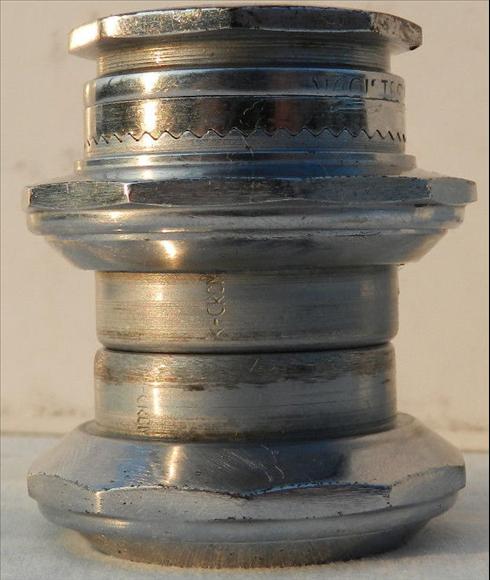
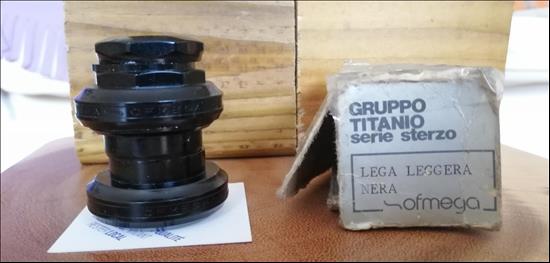
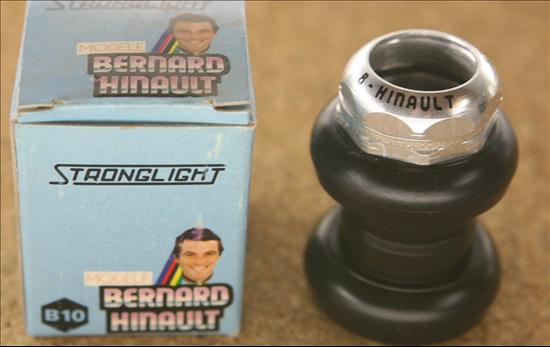
The shape also became more and more streamlined, which not only looked aesthetically pleasing, but also ensured more aerodynamics.
In the article below you will find the evolution of the Mavic headsets from 1979 to 1999, date when the modern Ahead type was launched.
Overview of vintage Mavic quill headsets
Check headset
Finally: how can you check that a mounted headset is positioned correctly?
First, the ball head must be fixed and not move. You can check this simply by placing your bike on the ground and pushing the handlebars back and forth with your brakes squeezed. If your front fork does not move at the same time as your bicycle and you get a nodding movement, there is play on the headset.
Second, you need to check whether the headset rotates smoothly. You do this by resting your bike on the rear wheel and almost straightening it. If you then let go of your steering wheel in the middle, it should gradually turn left or right to the same extent.


